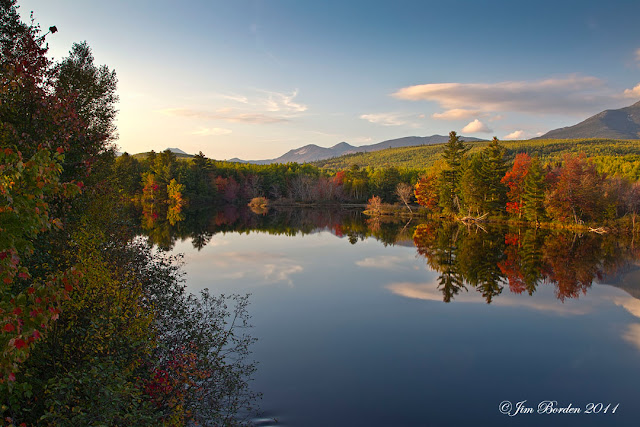Maine Bull Moose Overlooking a pond
canon 1D MK IV; Canon 600 f4 @f4 1/2000 ISO 640
I traveled to the Maine North woods this past week to spend a few days looking for moose. Saturday evening found me along a good spot near Millinockett Maine watching to see if moose would enter the pond to feed before dark. I spotted one cow across the pond and got some distant shots. I met up with a friend from Vermont later in Millinockett and we decided to walk to one of our favorite spots the next morning before we departed for out trip farther north. We had clear skies and nice golden light and the very nice bull pictured above came through apparently on his scrape trail and we were able to get some photos in the golden light. The next image is an example of how one moment we can have beautiful light and a few moments later, we have shadows and highlights. The bull apparently had recently lost his eye in a fight.
Canon 1D MK IV; 600 f4 @f6.3 1/200 ISO 1000
Later in the day we traveled with three other friends over log roads to a cabin at a remote lake in the North Maine Woods. The setting was absolutely beautiful. Most of our moose looking was going to be done by kayak with some walking logging lanes mixed in. The weather was beautiful with clear blue skies scattered with puffy white clouds.
Canon 7D; Canon 24-105 f4 @24mm f13 1/400 ISO 320
Paddling the stream and lake was a joy. Bitterns, ring neck ducks, pie billed grebes, white throated sparrows, yellow throated warblers, bald eagles, ospreys Northern harriers, broad wing hawks and Common Loons entertained us through the week.
Canon 7D; Canon 24-105 f4 @24mm f11 1/400 ISO400
The water was high due to the recent storms and that most likely effected the moose activity along the water. We did however hear bulls and cows grunting and wailing in the woods and we had moose tracks right past the cabin. We did spot a few moose. It was good practice for shooting from a kayak.
Canon 1D MK IV; Canon 300 f2.8 @f10 1/250 ISO400 -.33 EC
Canon 7D; Canon 24-105 f4 @58mm f10 1/320 ISO400 -.33EC
Since I had the longest distance to travel home (15 hours), I left early Thursday morning. On the way down the log road I came upon a small bull in the mist. I stopped, got out of jeep and photographed him for about an hour. I practiced my bull grunts and cow wails with him and we had fun.
Here are a few shots of him:
Canon 1D MK IV; Canon 300 f2.8 f2.8 @f2.8 1/125 ISO 2000
Canon 1D MK IV; Canon 300 f2.8 @f4 1/125 ISO2000
Canon 1D MK IV; Canon 24-105 f4 @105mm f4 1/50 ISO800
One of the benefits of shooting with the Canon 1D MK IV is that it allows us to push the ISO and still get great quality pictures.
Until next Time
Jim Borden





















































